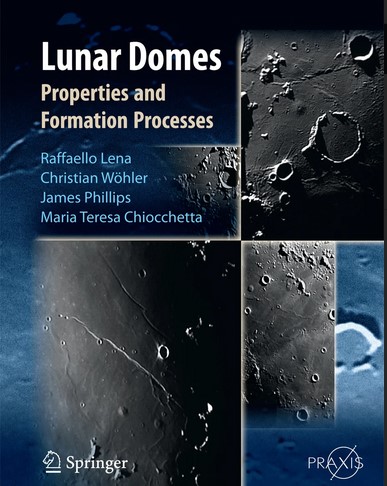Lunar Domes Program
Introduction
Lunar domes are small mounds, often with summit pits, found mostly on the maria. They are small volcanic shield volcanoes, such as those in Idaho, Iceland and other places on Earth. Lunar domes are typically 5-15 km in diameter although very large megadomes reach up to 70 km in width. All domes are very low compared to their diameters with slopes typically between 1-3°.
For additional information see the following blog for an Overview on Lunar DomesLunar Dome Classification System
Effusive Domes
- Class A domes are small and shallow and formed by high-TiO2 lavas of low viscosity, erupting at high effusion rates over very short periods of time, resulting in edifices of low volume.
- Class B domes consist of lavas of intermediate to high viscosity and moderate TiO2 content, erupting at low to intermediate effusion rates. If the effusion process continues over a long period of time, steep flank slopes and high volumes may occur (class B1), while short periods of effusion result in shallower edifices of lower volume (class B2).
- Class C domes are formed out of low-TiO2 (class C1) or high-TiO2 (class C2) lavas building up edifices of large diameter but shallow flank slope. These at shapes are due to low lava viscosities and high effusion rates.
- Class D comprises the very complex, shallow but large and voluminous edifices Arago α and ß, which were most probably formed during several subsequent effusion stages, while classes A-E describe simple, likely monogenetic effusive domes.
- Class E domes represent the smallest volcanic edifices formed by effusive mechanisms (diameter < 6 km). In analogy to class B, the class E domes are subdivided into subclasses E1 and E2, denoting the steep-sided flank slope larger than 2° and the shallow edifices of this class, respectively.
- Class G comprises the highland domes, which have highland-like spectral signatures and high flank slopes of 5°–15°, represented by Gruithuisen and Mairan highland domes.
- Class H is represented by the non-monogenetic Marius domes, subdivided into three different classes. Small domes of less than 5 km diameter belong to subclass H1. The irregular shapes of domes of subclass H2 with more than 5 km diameter and flank slopes below 5° indicate a formation during several effusive episodes. Domes of subclass H3 have diameters comparable to those of monogenetic class B1 domes, but their flank slopes are all steeper than 5° and reach values of up to 9°.
- Class I comprises large volcanic shields.
- Class L comprises the Ring Moat Dome (RMDs). These structures are thought to be volcanic in nature, possibly involving the extrusion of magmatic foam.
Putative Intrusive Domes
Lunar domes with very low flank slopes differ considerably from the more typical lunar effusive domes. Some of these domes are exceptionally large, and many of them are associated with faults or linear rilles of presumably tensional origin, while they do not show summit pits. A reliable discriminating criterion is the circularity of the dome outline: these domes are elongated and with low slopes (< 0.9°). The putative intrusive domes have circularity values below 0.8, while the circularity is always higher than 0.9 for the effusive domes having flank slopes below 0.9° and displaying effusive vents.
- Class In1 comprises large domes with diameters above 25 km and flank slopes of 0.2°–0.6° and have linear or curvilinear rilles traversing the summit.
- Class In2 is made up by smaller and slightly steeper domes with diameters of 10-15 km and flank slopes between 0.4° and0.9°.
- Class In3 comprises low domes with diameters of 13-20 km and flank slopes below 0.3°.

